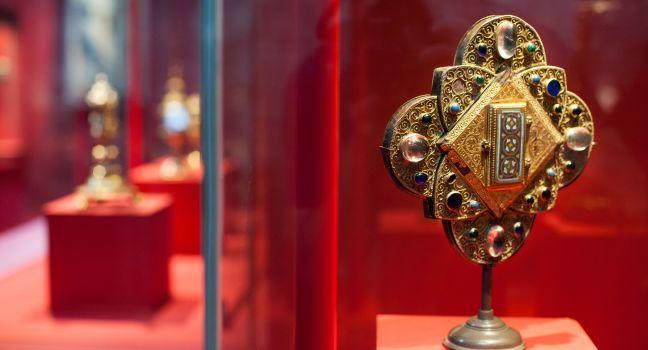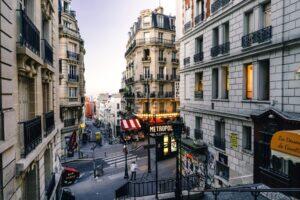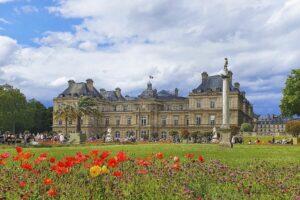Fodor's Expert Review Musée de Cluny

Built on the ruins of Roman baths, the Hôtel de Cluny has been a museum since medievalist Alexandre Du Sommerard established his collection here in 1844. The ornate 15th-century mansion was created for the abbot of Cluny, leader of the mightiest monastery in France. Symbols of the abbot's power surround the building, from the crenellated walls that proclaimed his independence from the king to the carved Burgundian grapes twining up the entrance that symbolize his valuable vineyards. The scallop shells (coquilles St-Jacques) covering the facade are a symbol of religious pilgrimage, another important source of income for the abbot; the well-traveled pilgrimage route to Spain once ran around the corner along Rue St-Jacques. The highlight of the museum's collection is the world-famous La Dame à la Licorne (The Lady and the Unicorn) tapestry series, woven in the 16th century, probably in Belgium, and now presented in refurbished surroundings. The vermillion tapestries... READ MORE
Built on the ruins of Roman baths, the Hôtel de Cluny has been a museum since medievalist Alexandre Du Sommerard established his collection here in 1844. The ornate 15th-century mansion was created for the abbot of Cluny, leader of the mightiest monastery in France. Symbols of the abbot's power surround the building, from the crenellated walls that proclaimed his independence from the king to the carved Burgundian grapes twining up the entrance that symbolize his valuable vineyards. The scallop shells (coquilles St-Jacques) covering the facade are a symbol of religious pilgrimage, another important source of income for the abbot; the well-traveled pilgrimage route to Spain once ran around the corner along Rue St-Jacques. The highlight of the museum's collection is the world-famous La Dame à la Licorne (The Lady and the Unicorn) tapestry series, woven in the 16th century, probably in Belgium, and now presented in refurbished surroundings. The vermillion tapestries are an allegorical representation of the five senses. In each, a unicorn and a lion surround an elegant young woman against an elaborate millefleur (literally, "1,000 flowers") background. The enigmatic sixth tapestry is thought to be either a tribute to a sixth sense, perhaps intelligence, or a renouncement of the other senses; "To my only desire" is inscribed at the top. The collection also includes the original sculpted heads of the Kings of Israel and Judah from Notre-Dame, decapitated during the Revolution and discovered in 1977 in the basement of a French bank. The frigidarium is a stunning reminder of the city's cold-water Roman baths; the soaring space, painstakingly renovated, houses temporary exhibits. Also notable is the pocket-size chapel with its elaborate Gothic ceiling. Outside, in Place Paul Painlevé, is a charming medieval-style garden where you can see flora depicted in the unicorn tapestries. The English audio guide (€3) is highly recommended. For a different kind of auditory experience, check the event listings; concerts of medieval music are often staged in the evening, Sunday afternoons, and Monday at lunchtime.
READ LESS








